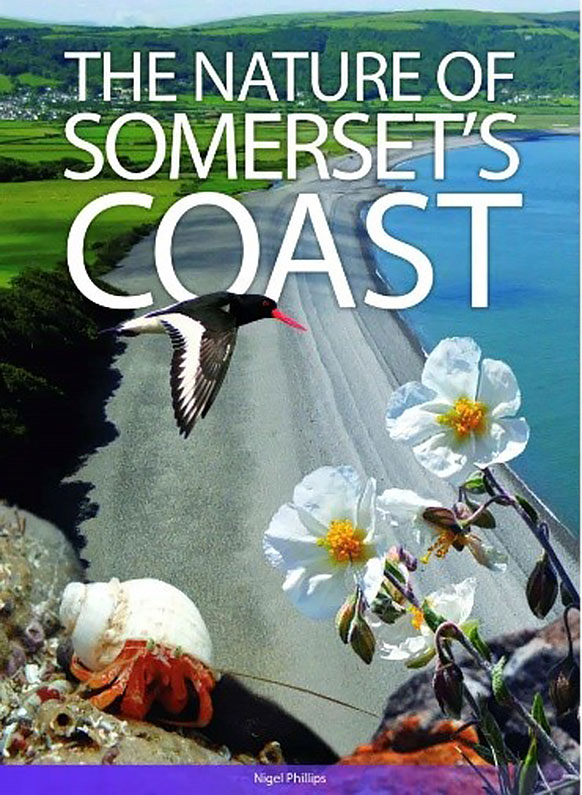The Thomas Poole Library Evening Talk 13th April 2022
Nigel a celebrated local conservationist, honoured the Library with the launch of his new book The Nature of Somerset’s Coast. He also treated the audience to a welcome glass of wine.
Nigel worked for over 30 years in nature conservation but always in dry habitats. In his spare time, he spent much time scuba diving and snorkelling looking at marine life. In 2009 he retired to Nether Stowey and offered to set up a programme with the Somerset Wildlife Trust to raise marine conservation awareness. For over 6 years he ran regular team meetings and volunteer groups, holding Somerset Coast Marine Conservation Conferences and guided coastal walks, with the successful outcome that the Wildlife Trust was able to apply for further funding for coastal events.
In 2011 he and his wife Janet personally published Somerset Coast: a living landscape that covered the coastline between Porlock Bay and Brean and sold 1,000 copies. He was encouraged (strongly!) by people living in North Somerset that he should cover their coastline too! He was approached by the publisher NatureBureau Ltd, a specialist publisher in nature conservation, to write a more in-depth study of the whole of the Somerset coastline between Glenthorn, on the Devon border, and the River Avon just north of Portishead. It is important to know that all profits from the book go to the Somerset Wildlife Trust in order to progress future marine conservation.
Nigel treated us to a series of photographs from his new book which showed the marine life from Porlock Weir and Minehead Bay including a very dense kelp forest, anemones, cuttlefish eggs (which look like a bunch of black grapes!), dolphins and even a Sun Starfish which grows to 20cm across. Harbour Porpoises breed in Porlock Bay.
In addition, his book covers the coastal sand dunes, grassland and salt marshes. We learned how important the shifting sands are to plant life including Sea Rocket, Saltwater Seawort Sea Spurge and especially the rare Sand Toadflax which grows on the Brean Dunes. The coast also hosts parasitic plants which have no leaves or chlorophyll.
We also learned that the Somerset coastline is part of the Jurassic stratum which stretches under Somerset and Dorset and emerges at Lyme Regis which is why our coast is equally rich in fossils but is less well known because of the publicity given by the Victorians to the Dorset Jurassic Coast.
There is wonderful grassland inland from the coast – the strip of grassland between Lilstock and Kilve is rich in wild orchids, including bee orchids. At Berrow, there is a strip of grassland that is designated an Area of Special Scientific Interest. Here you can find many different wild orchids including the Lizard Orchid. 24 species of butterfly live along the coast and it is especially good for bee varieties including Ivy Bees which lay eggs in the sand dunes.
This is a wonderful part of the coast and hosts a huge variety of habitats, even a temperate rainforest abundant with mosses and oak trees. The woodlands go right down to the beach and form the longest stretch of woodland cliffs in England. Heathland also goes down to the beach and is named Maritime Heath.
Thank you, Nigel, for all your work in raising our appreciation of this wonderful coastline and for the publication of this marvellously detailed book which can be enjoyed for many years to come.
PHILLIPS, Nigel [2022] The nature of Somerset’s coast. NatureBureau Ltd [isbn 978-913994-03-7] £38.50 available from Nigel at 37 Castle Street Nether Stowey.
Email nigelphillips@thesomersetcoast.co.uk or order direct from the publisher www.naturebureau.co.uk
A copy will also be available in the Library.
Norma Frood (Trustee and Membership Secretary The Thomas Poole Library charity]
membership@thomaspoolelibrary.org.uk
Book Launch “The Nature of Somerset’s Coast” by Nigel Phillips

